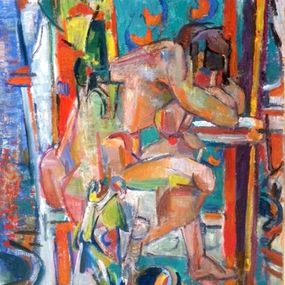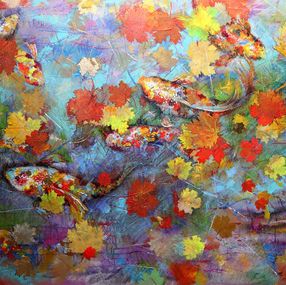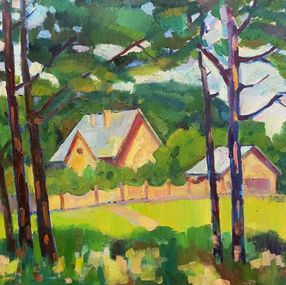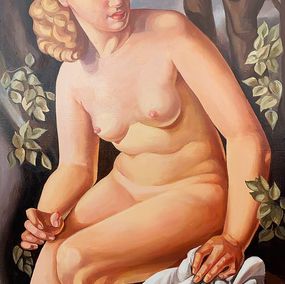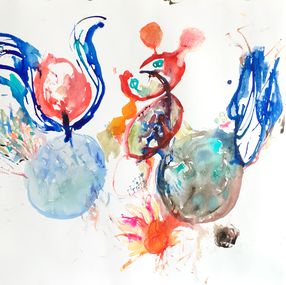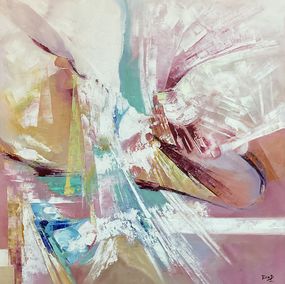

France
• 1896
Biography
1896 Charles WALCH is born in Thann (Haut-Rhin on August 4, 1896). He is the second in a family of 4 children. Her father is an accountant correspondent. Charles WALCH was born with his right arm atrophied and his right leg slightly shorter than the left. His malformation, which later forced him to work with his left hand, ripened him early and made him more lonely. Very early on, his sketchbook and his box of colors were a means of escape. 1908 - 1913 He studied at the municipal school and then at the Thann college. School bores him, and it is to drawing that he reserves all his energy and passion. After his studies certificate, preferring to focus on an artisanal profession, he took courses at the Société Industrielle de Mulhouse. When he left, he was hired as a designer of models intended for printing on fabric. 1914 The WALCH family moves away from Thann because of the war, but not Charles. 1916 Charles WALCH meets Paul Bonnet, medical officer, great lover of painting. This one in front of the exceptional qualities to which the works of WALCH testify is decided to help him. 1918 Thanks to Doctor Bonnet and the Prefect Poulet, Charles WALCH obtains a scholarship which will allow him to settle in Paris. WALCH is one of the only Alsatian artists of his generation to apply for and obtain a French grant. After a passage at the School of Fine Arts, he quickly preferred the School of Decorative Arts, which he attended until 1923. 1921 - 1922 First exhibitions in Thann. 1923 WALCH exhibits at the Salon des Indépendants d'Alsace. When he left the School of Decorative Arts, he volunteered to decorate the Middle College chapel in Sainte-Croix de Neuilly where he was hired as a drawing teacher. 1925 He marries, in Paris, Maria Schermesser, whom he had met in 1923 in Alsace. 1929 He moved to n ° 14 rue Borromée in the studio where he worked and lived for the rest of his life. This is a thankless period for WALCH, which is experiencing financial difficulties, isolation and public indifference. 1930 In possession of a solid, constructed and balanced style, he breaks with the discipline he had imposed on himself, color finally emerges and with it, the arabesque of the line, the freedom and the fantasy of the setting. page, the poetry of the subjects. The works of this period exhibited at the Salon d'Automne (1931) or at the Salon des Indépendants did not meet with any understanding from critics. 1934 He participates in an exhibition of young painters at the Galerie Braun in Paris. His works are noticed by the critic Georges BESSON who enthusiastic, will support him and will remain throughout his life one of his most faithful friends. 1935 Color imposes itself in force in his paintings, bursts into the bouquets which appear in most of the works from 1935 to 1942. 1936 Charles WALCH frequently participates in group exhibitions. 1937 First official success, Charles WALCH receives a gold medal at the Universal Exhibition in Paris. 1938 WALCH, at the age of 47, finally enjoys a certain glory confirmed by his participation in the exhibition of the "Thirtieth Group of Artists of this Time" where an entire room was reserved for him. The artist was finally able to make a living from his art and abandon his profession as a teacher after being twenty years without selling a single painting! 1939 The war interrupts the hope of finally benefiting from a promised celebrity and also from a certain material success. His very art became suspect in the eyes of the new regime. 1940 Charles WALCH is forced to leave for an exodus in Creuse for 3 months. Sensitive, patriotic and Alsatian, he felt the defeat painfully. 1941 He meets Georges Rouault. A lot of people came to WALCH at that time. Critics, writers, amateurs such as Desnoyer, Singier, Manessier, Bazaine, Alix, Gromaire or Villon. 1942 From that date, he played an important role at the Salon d'Automne, of which he was appointed member of the Deputy Committee and fulfilled the job of usher at each exhibition. 1944 - 1945 Charles Walch made a name for himself with his famous "Roosters". The one already on the poster for the 1944 Salon d'Automne, the Liberation Fair, which, from the Star to the Place de la Nation, proclaimed the song of a "breathing" reconquered. But above all with the flamboyant gouache that he produced during the winter during his stay in Chaource in Aube, and which was reproduced and distributed in thousands of copies by the Braun editions. 1948 The Mulhouse Museum of Fine Arts devotes a fifth and final exhibition to him. Charles WALCH is named Knight of the Legion of Honor. On December 12, while he was busy painting in his studio, Charles WALCH was struck down by a subarachnoid hemorrhage.
Read more
Discover the movements linked to Charles Walch
Discover similar artists
Discover our selections of works by artists
Need help finding your favorite? Consult our selection pages made for you.






